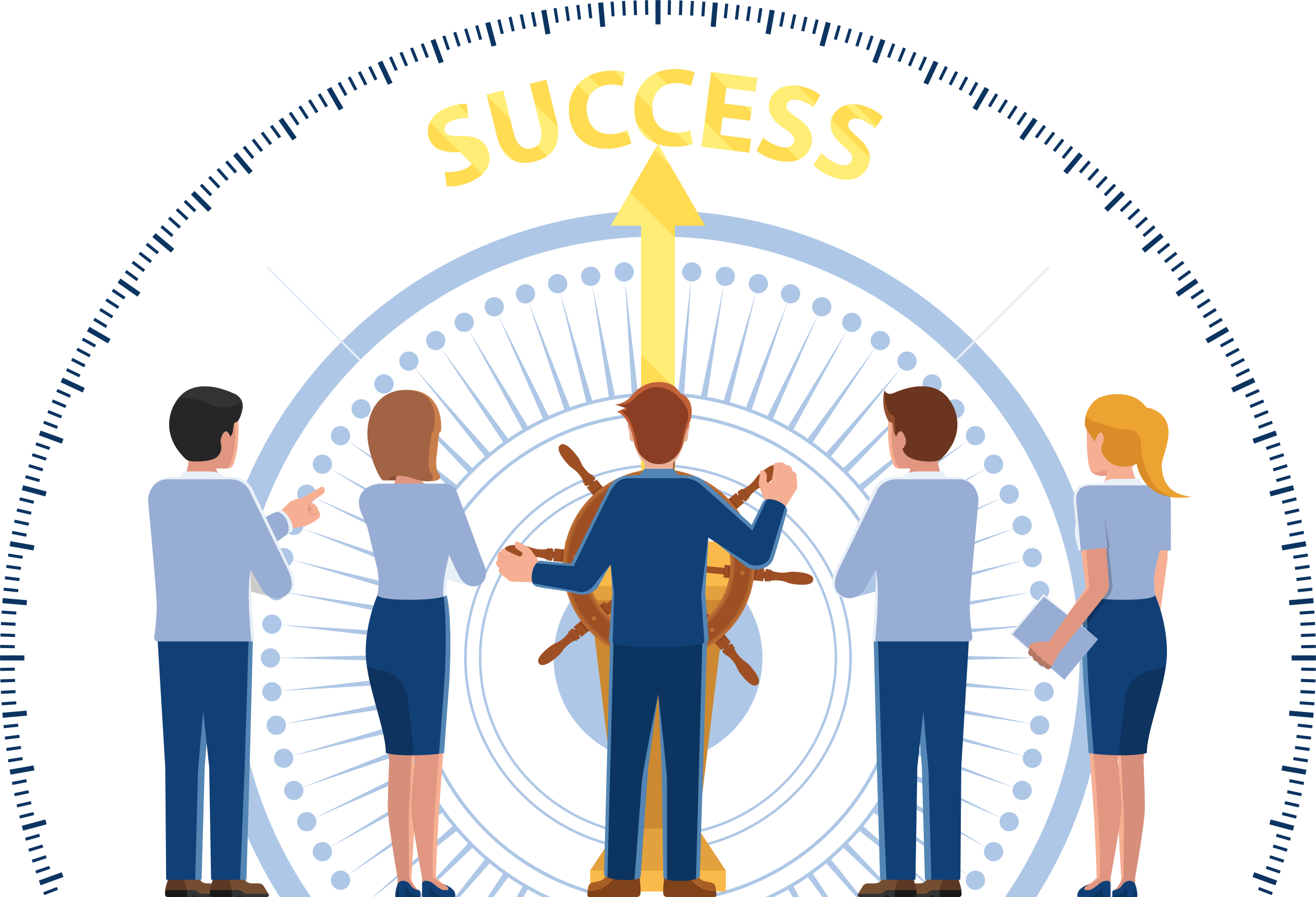Meeting Best Practices for Customer Success Managers
Seven (7) Tips to Effectively Manage Meetings
Customer Success Managers play an essential role in every business. They help ensure your customers are happy and are achieving their expected outcomes. Most importantly, they proactively ensure that your customers become so successful with you that they won’t consider leaving your products or services for any other else.
However, customers aren’t the only people CSMs interact with, as it’s also their job to ensure that their actions would lead toward the organization’s goals for the company’s version of success. Relative to this, they must be able to present efficiently, productively, and in a style that fits the stakeholders’ standards. Effectively managing a meeting with business decision-makers builds credibility and helps maintain a valuable trust relationship between the CSM and the company. Find out how you could do better in your next meeting, whether it be face-to-face or virtually, and make both the stakeholders’ and the customers’ experience better:
1. Prepare and send an agenda before your meeting.
When scheduling a meeting, it’s essential to set the stage for success by sending a plan ahead of time. A well-crafted schedule can help you and your team quickly identify what needs to be discussed in each session and how best to accomplish those goals.
An agenda can also ensure that everyone has enough time to discuss essential items without feeling rushed or overwhelmed by other topics. For example: “We’ll spend 10 minutes on this item, then move straight into our next topic.” This prevents people from getting distracted while waiting for others’ turn to speak up; it ensures there are no gaps between the top and that all voices have been heard—not just one person’s voice! Here are some tips on creating your agenda template:
- Include all relevant details about each issue being discussed (e.g., date/time).
- Add any additional notes about why this is important (e.g., budget constraints).
Most importantly, follow the agenda you sent. The meeting should follow the plan you sent and not deviate for any reason. If it does, you’ll know immediately that something has gone wrong, which can lead to many unnecessary distractions and wasted time in fixing it. Keep track of how much time is left on each topic so that if you’re late finishing up one section due to another issue (which will likely happen), then there won’t be any confusion about what needs to happen next with your team members’ schedules or deadlines. Know more about meeting best practices here: https://academy.practicalcsm.com/meetings-best-practice/
For companies, having a CS team has proven to deliver measurable and scalable value. Still, no matter how good your CS team is, there are specific points they may have difficulty doing or understanding. This is where a Customer Success coach comes in.
2. Start on time. End on time.
The first thing to remember when planning a customer success meeting is that it should start on time and end at the scheduled time. Don’t let the meeting drag on or go over the allotted time, as this can frustrate both parties. If you run over budget, communicate this early enough so there is room for negotiation after the fact.
3. Take notes, even in remote meetings.
As you know, taking notes during a meeting is a great way to capture information that can be useful later. But when it comes to customer success managers, this practice can also help them stay organized and on track—and prevent them from forgetting anything important while working remotely.
Take notes in the first place: When you’re at your desk or laptop and have access to an internet connection, take advantage of it! Write down any thoughts or ideas that come into your mind during each meeting with customers, so they don’t get lost in the shuffle (and also because there’s nothing worse than having something valuable go out of date). Then make sure those notes are stored somewhere safe, ideally within easy reach, without needing anyone else around me.
4. Listen more than you talk.
Listening is a skill that can be learned, but it’s also a skill that requires practice. Listening is the foundation for all communication. It’s how you can truly understand what people say and why they say it in the first place.
When listening to your customers and stakeholders, don’t just hear their words; listen for the emotion behind them—what they feel as they speak them out loud! If someone says “I’m not happy with this product” but has an angry tone in their voice when saying so, then there may be some underlying issues at play here that need addressing before any solutions are offered up by your team members (e.g., maybe a customer isn’t happy with how long something takes to process).
Don’t stop listening after hearing all of this; keep going until you’ve fully understood each person’s intent behind what was said before moving on to another topic or topic area altogether! You’ll make better decisions based on the factually correct information and context-specific insights derived from multiple perspectives.
5. Focus on 1-3 key topics for the meeting.
The first step in a successful meeting is setting the agenda. The best way to do this is by focusing on 1-3 key topics for the discussion. Don’t try to cover everything; don’t try to cover too much; don’t try to cover things that are not relevant or appropriate for your meeting.
If you have an extensive list of topics (too many), you might want to break them into smaller chunks so that they can be covered more effectively during each half-hour session. This will make it easier for people who attend multiple meetings per day or week because they won’t need so much time between meetings on their calendars.
6. Ask questions, lots of them.
As a customer success manager, you’re in the business of paving the pathway towards value realization for your customers. That means asking lots of questions and making sure that every one of them is an open-ended question.
Open-ended questions can help your team understand the customer’s needs more clearly, but they also get you thinking about how to solve the issue. They require more than just a yes or no answer; they need further thought on how to best help your client. If you ask them, “What do you want us to do?” then it might seem like a simple enough question—but really, there’s so much more going on here! And by asking multiple questions throughout the conversation (even if they’re not necessarily related), will give both parties time and space within which they may arrive at solutions together without feeling rushed or confined within corporate structures
7. After the meeting, send notes and action items.
Notes are a summary of what happened during each conversation with customers. Use a few sentences on each topic so that it’s easily digestible for everyone who needs to know about it. For example, if you had a conversation about how your company can improve its customer onboarding process, including information about the changes you discussed and how those will be implemented in future meetings with customers.
Action Items summarize any critical issues or questions raised by your conversations with customers that need follow-up action from someone else on your team (the product manager or executive vice president). Also, you may choose to include any plans for implementing these changes into future communication strategies with customers—this way, they’ll know exactly what they’re working toward while also getting another chance to ask questions during future meetings!
Conclusion
Customer Success Managers have a lot to do. They need to keep up with the latest trends, identify strategic partners and gather feedback from their customers. And, if they’re lucky enough to have an entire team reporting directly under them, they also need to manage all these things while ensuring everyone is on track with their tasks and goals. To make this job easier, we recommend following our seven best practices for running effective meetings: Prepare an agenda before your meeting starts, start on time and end on time (no matter how long or short it’s scheduled), and take notes even in remote meetings; focus on 1-3 key topics for each meeting so that everyone knows what needs addressing today; ask questions, so people feel comfortable contributing ideas from different perspectives without feeling pressured into sharing everything at once! After each meeting, send out minutes along with action items, so everyone knows exactly what was discussed during those precious hours spent together.
In customer success, it’s essential to be organized and efficient. The key is always to ensure you have the right tools in place to get more work done with less effort. These Customer Success Manager best practices will help your team save time and make them more productive—and that’s what every good manager should want!
Learn more about Communicating with Customers (Chapter 5), access our book – Practical Customer Success Management: A best practice framework for rapid generation of customer success.







